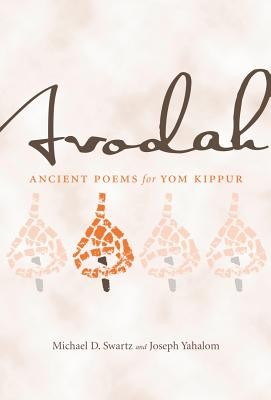
- We will send in 10–14 business days.
- Author: Michael D Swartz
- Publisher: Penn State University Press
- ISBN-10: 0271058544
- ISBN-13: 9780271058542
- Format: 15.2 x 22.9 x 2.3 cm, softcover
- Language: English, Hebrajų
- SAVE -10% with code: EXTRA
Reviews
Description
Avodah: Ancient Poems for Yom Kippur is the first major translation of one of the most important genres of the lost literature of the ancient synagogue. Known as the Avodah piyyutim, this liturgical poetry was composed by the synagogue poets of fifth- to ninth-century Palestine and sung in the synagogues on Yom Kippur, the Day of Atonement. Although it was suppressed by generations of rabbis, its ornamental beauty and deep exploration of sacred stories ensured its popularity for centuries.
Piyyut literature can teach us much about how ancient Jews understood sacrifice, sacred space, and sin. The poems are also a rich source for retrieving myths and symbols not found in the conventional Rabbinic sources, such as the Talmuds and Midrash. Moreover, these compositions rise to the level of fine literature. They are the products of great literary effort, continue and extend the tradition of biblical parallelism, and reveal the aesthetic sensibilities of the Mediterranean in Late Antiquity.
EXTRA 10 % discount with code: EXTRA
The promotion ends in 18d.19:43:45
The discount code is valid when purchasing from 10 €. Discounts do not stack.
- Author: Michael D Swartz
- Publisher: Penn State University Press
- ISBN-10: 0271058544
- ISBN-13: 9780271058542
- Format: 15.2 x 22.9 x 2.3 cm, softcover
- Language: English, Hebrajų English, Hebrajų
Avodah: Ancient Poems for Yom Kippur is the first major translation of one of the most important genres of the lost literature of the ancient synagogue. Known as the Avodah piyyutim, this liturgical poetry was composed by the synagogue poets of fifth- to ninth-century Palestine and sung in the synagogues on Yom Kippur, the Day of Atonement. Although it was suppressed by generations of rabbis, its ornamental beauty and deep exploration of sacred stories ensured its popularity for centuries.
Piyyut literature can teach us much about how ancient Jews understood sacrifice, sacred space, and sin. The poems are also a rich source for retrieving myths and symbols not found in the conventional Rabbinic sources, such as the Talmuds and Midrash. Moreover, these compositions rise to the level of fine literature. They are the products of great literary effort, continue and extend the tradition of biblical parallelism, and reveal the aesthetic sensibilities of the Mediterranean in Late Antiquity.


Reviews